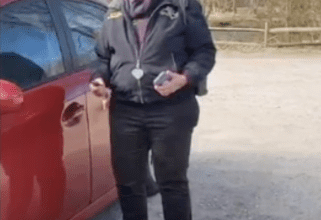Simple strategies for overcoming seasonal sadness now

It’s that time of year again. The days are shorter, the weather’s grayer, and you might just feel…down. It’s completely normal to experience a dip in mood when the seasons change. For many, it’s more than just a little sadness; it’s seasonal affective disorder (SAD) or just a general feeling of the winter blues. You’re not alone, and there are things you can do to lift your spirits. We often focus on cozying up and hibernating, but what if I told you one of the best things you can do for your mental health right now is to move your body? It sounds counterintuitive, right? When you’re feeling low, exercise is often the last thing you want to do. But trust me, the science is clear: exercise helps depression and can be a powerful tool for overcoming seasonal sadness. This isn’t about running a marathon; it’s about finding small, manageable ways to incorporate movement into your day and rediscover your joy. We’ll explore simple strategies, understand why exercise is so effective, and help you create a plan that works for you.
Key Takeaways
- Seasonal sadness is common, and you’re not alone in feeling down during colder months.
- Exercise helps depression by releasing endorphins and improving mood-regulating brain chemicals.
- You don’t need intense workouts – even small amounts of physical activity can make a big difference.
- Finding an activity you enjoy is crucial for sticking with it.
- Consistency is key; aim for regular movement, even on days when you don’t feel motivated.
- Combining exercise with other self-care practices (like sunlight exposure and social connection) can amplify the benefits.
- Don’t hesitate to seek professional help if your sadness is severe or interfering with your daily life.
Understanding Seasonal Sadness
Seasonal sadness isn’t just about feeling a little bummed out. It’s a real phenomenon linked to changes in sunlight. Less sunlight can disrupt your body’s internal clock, leading to imbalances in serotonin and melatonin – chemicals that play a vital role in mood regulation. This can manifest as low energy, difficulty concentrating, changes in appetite, and feelings of hopelessness. Many people experience a milder form of this, often called the “winter blues,” while others may be diagnosed with Seasonal Affective Disorder (SAD). SAD is a type of depression specifically related to changes in seasons. Recognizing the difference is important, as SAD may require more intensive treatment, like light therapy or medication, alongside lifestyle changes. But even if you don’t have SAD, proactively addressing your mood during the darker months is a smart move.
The Science Behind Why Exercise Helps Depression
So, how does getting active actually lift your mood? It’s not just about endorphins, although those “feel-good” chemicals definitely play a role! When you exercise, your brain releases a cocktail of neurochemicals that have mood-boosting effects. These include endorphins, serotonin, dopamine, and brain-derived neurotrophic factor (BDNF). BDNF is particularly interesting – it’s like fertilizer for your brain, promoting the growth of new brain cells and protecting existing ones. Studies have shown that regular exercise can actually increase the size of the hippocampus, a brain area crucial for learning and memory, which often shrinks in people with depression. Beyond the chemical changes, exercise also reduces inflammation, improves sleep, and boosts self-esteem – all factors that contribute to better mental health. A study published in the Journal of Psychiatric Research found that even low-intensity exercise, like walking, significantly reduced symptoms of depression.
Small Steps, Big Impact: Easy Exercises to Try
You don’t need to become a gym rat to reap the benefits. The best exercise is the one you’ll actually do. Start small and build from there. Here are a few ideas:
- Walking: A brisk 30-minute walk can do wonders. Try walking during your lunch break, after dinner, or on the weekends.
- Dancing: Put on your favorite music and dance around your living room! It’s fun, freeing, and a great workout.
- Yoga: Yoga combines physical postures, breathing techniques, and meditation, promoting both physical and mental well-being. There are tons of free yoga videos online for all levels.
- Gardening: Getting your hands dirty in the garden is surprisingly therapeutic and provides a gentle form of exercise.
- Stair Climbing: Skip the elevator and take the stairs whenever possible.
- Bodyweight Exercises: Simple exercises like squats, push-ups (against a wall if needed), and lunges can be done anywhere, anytime.
Making Exercise a Habit: Tips for Consistency
Starting is the hardest part. Here are some tips to help you stick with it:
- Schedule it: Treat exercise like any other important appointment and block it off in your calendar.
- Find a buddy: Exercising with a friend can provide motivation and accountability.
- Set realistic goals: Don’t try to do too much too soon. Start with 10-15 minutes a day and gradually increase the duration and intensity.
- Reward yourself: Celebrate your accomplishments, no matter how small.
- Don’t beat yourself up: Everyone misses a workout now and then. Just get back on track as soon as possible.
- Make it enjoyable: Choose activities you genuinely like. If you dread your workout, you’re less likely to stick with it. Consider trying different activities until you find something that clicks.
The Role of Sunlight and Vitamin D
While exercise helps depression, it’s even more effective when combined with other mood-boosting strategies. Sunlight exposure is crucial for regulating your body’s internal clock and boosting vitamin D levels. Vitamin D deficiency has been linked to depression, so consider spending some time outdoors each day, even if it’s just for a few minutes. If you live in a region with limited sunlight, talk to your doctor about taking a vitamin D supplement. Light therapy, using a special lamp that mimics sunlight, is also a proven treatment for SAD.
Beyond Exercise: Other Self-Care Strategies
Exercise is a powerful tool, but it’s not a magic bullet. Combine it with other self-care practices for optimal results:
- Social Connection: Spend time with loved ones. Social interaction can combat feelings of isolation and loneliness.
- Mindfulness and Meditation: Practicing mindfulness can help you stay grounded in the present moment and reduce stress.
- Healthy Diet: Nourish your body with nutritious foods.
- Adequate Sleep: Aim for 7-9 hours of quality sleep each night.
- Limit Screen Time: Excessive screen time can disrupt sleep and contribute to feelings of anxiety and depression.
When to Seek Professional Help
If your sadness is severe, persistent, or interfering with your daily life, don’t hesitate to seek professional help. A therapist or psychiatrist can provide support, guidance, and treatment options, such as therapy or medication. Remember, asking for help is a sign of strength, not weakness. Resources like the National Alliance on Mental Illness (NAMI) and the Mental Health America (MHA) can provide information and support.
FAQs
Q: How quickly will I feel better after starting to exercise?
A: It varies from person to person, but many people start to notice improvements in their mood within a few weeks of starting a regular exercise routine. Consistency is key!
Q: I’m really tired. How can I motivate myself to exercise?
A: Start with something very gentle, like a short walk or some stretching. Focus on how you’ll feel after the exercise, rather than how you feel before. Sometimes, just getting started is the hardest part.
Q: What’s the best type of exercise for depression?
A: The best exercise is the one you enjoy and will stick with! Any form of physical activity can be beneficial.
Q: Can exercise replace medication for depression?
A: For some people with mild to moderate depression, exercise can be as effective as medication. However, it’s important to talk to your doctor before making any changes to your treatment plan. Exercise helps depression but isn’t a one-size-fits-all solution.
Q: I have a physical limitation. Can I still exercise?
A: Absolutely! Talk to your doctor or a physical therapist about safe and appropriate exercises for your condition. There are many modifications you can make to accommodate physical limitations.
A Note of Encouragement
Remember, overcoming seasonal sadness takes time and effort. Be patient with yourself, celebrate your progress, and don’t be afraid to ask for help. You deserve to feel good, and taking care of your mental health is an investment in your overall well-being. Start small, be consistent, and embrace the power of movement. You’ve got this!
We’d love to hear from you! What are your favorite ways to stay active during the colder months? Share your tips and experiences in the comments below, and don’t forget to share this article with anyone who might be struggling.
Hi, I’m Sophia! Welcome to my blog Try Stress Management (trystressmanagement.com), where I share simple, down-to-earth ways to handle stress and bring more calm into everyday life. Think of me as your friendly guide, offering practical tips, reflections, and little reminders that we’re all figuring this out together.
When I’m not blogging, you’ll usually find me with a good book, sipping tea, or exploring new walking trails. I believe small changes can make a big difference—and that a calmer, happier life is possible for everyone.



